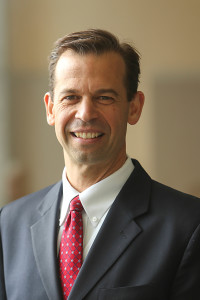Last month, Jack Connell was officially promoted to the new position of Vice President for Academic Affairs and Dean of the Faculty. “Provost” is the abbreviated and more commonly used term for someone in this title. His new responsibilities embody “the academic functions of the college,” which includes “faculty, academic programs, library, etc,” he said. Additionally, Connell now oversees the admissions department and is second in command of the college.

Connell was hired in March of this year, according to a Houghton College press release. He served as the vice president for academic affairs and dean of the college for only six months before being promoted. “I continue to have all of those responsibilities in this new structure, but have picked up the additional responsibility for enrollment,” Connell explained “ “The new title of provost is simply intended to reflect those expanded responsibilities.” Additionally, he said,, “This administrative reconfiguration eliminates that vice president position, and as a result, the admissions office will now report to me and the student financial services office will report to the chief financial officer.”
As President Mullen explained, the reason for structural changes was twofold. One reason was a “need for greater dialogue between admissions and academic programming as we seek to connect incoming students with the wide ranging opportunities within Houghton’s academic programs.” Secondly,
Connell brings expertise to enrollment. “His dissertation at the University of Rochester (2014) was done in the area of building enrollment within private higher education,” Mullen said.
Connell’s new role brings forth much anticipation regarding the future of admissions. He expressed excitement about the “opportunity for closer collaboration between our enrollment function and the academic programs.” Additionally, with the ever-changing higher education marketplace, the faculty and academic programs will be “appropriately responsive,” thus facilitating these new goals of reaching a greater number of potential students.
Mullen added that the new structural changes will bring “greater interaction among the critical areas of admissions, financial aid, academic programs, and budget formation.” She continued, “It is virtually impossible to think about any one of these areas without reference to the others. Reflecting this in our organizational structure seemed to be an important way to signal this reality.”
In addition to all these areas being drawn together to promote greater communication, Connell believes that the admissions office reporting to him rather than a vice president for enrollment will be the most significant change in the work dynamic, as it will alter both the chain of command as well as proficiency of communication. “I hope the admissions office will feel highly supported by me,” said Connell. “And I hope to be able to provide for them the resources, counsel, and connections they need to succeed in their role.”
